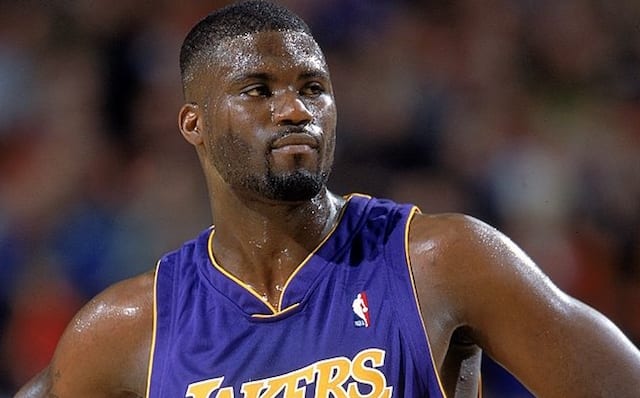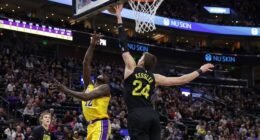I can’t get mad at the average fan for not knowing the finer points of the NBA’s current collective bargaining agreement (CBA). It isn’t the easiest thing to digest, and besides, who needs rules when it comes to fantasizing about ways in which the Lakers can get better, right?
As soon as it seemed as if people finally got a grasp on the old CBA, the league’s owners decided to lock the players out and many of the major issues in the old CBA were either tweaked, repealed, or replaced. And while I can’t be mad at fans who don’t know about the changes, I have every right to be angry at respected members of the media who should have done their homework by now.
I only have so much time with which to answer the questions people send me on Twitter or let those aforementioned writers know that they incorrectly reported something that will most likely be read by hundreds of thousands of people.
Instead, I figured I’d use this space to educate you in the simplest way I can on some of the more common fallacies as they pertain to the Lakers and what they can or cannot do this off-season to improve their roster.
The Lakers Should Just Pay The Luxury Tax And Sign Chris Paul
You’d be surprised how many people think teams can just sign whichever free agent they want as long as they’re willing to pay the luxury tax. That’s 100% false. First things first, here’s what you need to know:
1) The salary cap for this season is $58 million.
2) The luxury tax threshold for this season is $70 million.
In an attempt to give owners the chance to keep their rosters together, the NBA allows teams to go over the salary cap only when it comes to re-signing their own free agents. The Lakers can re-sign Dwight Howard even though they are way over the cap but they couldn’t, contrary to what Bill Plaschke thinks, offer that same contract to Chris Paul instead. That’s because he’s not currently a Laker.
The luxury tax kicks in when teams pass the $70 million threshold in overall salary. In other words, teams have a $12 million cushion with which to go over the cap to retain their players before they have to pay taxes on the amount in which they are over.
That’s not all.
All of the teams who finish the season under the luxury tax threshold get to evenly split all of the money collected from the tax-paying teams. So being even a dollar over the luxury tax is much more costly than just being a dollar over because you then miss out on the millions shared by those teams under the luxury tax.
The Lakers Should Sign J.R. Smith or Nate Robinson For The Mid-Level Exception
I get this one sent to me a lot. If it’s not Smith or Robinson then it’s Tony Allen, Kyle Korver, or Jarrett Jack. The problem is this is another one of those things that changed dramatically with the new CBA. The mid-level exception (MLE) can still only be used by teams over the cap but there is now a different set of rules for teams that are either above or below the luxury tax.
Here’s what you need to know about the non-taxpayer MLE:
- The maximum first year salary for the non-taxpayer MLE this year was $5 million.
- The maximum number of years that can be offered using the non-taxpayer MLE is four.
- The non-taxpayer MLE can be split amongst multiple players.
- Teams can only use the non-taxpayer MLE so long as they are no more than $4 million over the luxury tax after having used it.
Here’s what you need to know about the taxpayer MLE (also called the mini-MLE):
- The maximum first year salary for the taxpayer MLE this year was $3.09 million.
- The maximum number of years that can be offered using the taxpayer MLE is three.
- The taxpayer MLE can be split amongst multiple players.
- Only teams more than $4 million over the luxury tax can use it.
The current non-taxpayer MLE is very similar to the one that was in the old CBA. The major difference is that under the old CBA every team over the cap was allowed to use it. In 2009, the Lakers were well over the cap but used the full MLE to sign Ron Artest to a 5-year, $34 million contract. In 2010, they used a nice chunk of it to sign Steve Blake to a 4-year, $16 million contract. Nowadays they wouldn’t have been able to sign either of those guys for that much. Instead have to settle for the likes of Josh McRoberts, who they signed using the mini-MLE in 2011, for only two years and only $6.2 million. Does anyone think Corey Brewer, Nate Robinson, Tony Allen, Kyle Korver, or Jarrett Jack is going to play for $3 million?
—- Check out this wallpaper featuring the legends of Lakers basketball! —-
Besides, with even steeper luxury tax penalties going into effect next season, that $3 million mini-MLE could end up costing the Lakers $10 million. So don’t be surprised if they either don’t use it or only use a portion of it.
Kobe Needs To Restructure His Contract To Free Up Some Cap Space
This is another one that I see and hear far too often. Don’t get me wrong. It would be nice if the Lakers could change the terms of Kobe’s contract from one remaining year at $30 million to 30 remaining years at $1 million but it isn’t allowed. NBA contracts cannot be restructured under any circumstance. It’s one of those things that the players union would never allow to to be included in the CBA.





